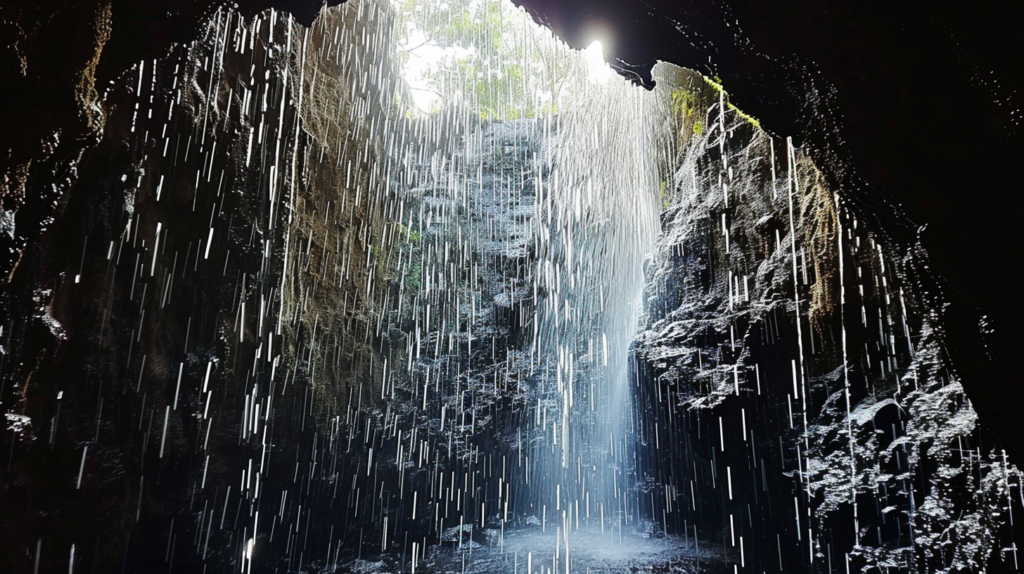History of the Marcos y Cordero Route
The Marcos y Cordero Route is much more than just a hiking trail. It is a journey through time that reveals the rich history and evolution of La Palma, one of the most enchanting islands of the Canary archipelago. This article will take you through the different historical periods that have shaped this route, from its prehistoric origins to its vital role in environmental conservation today.
Prehistoric Origins

- 5.30h
- 150m of ascent and 1,000m of descent
- Island of La Palma
The origins of the Marcos y Cordero Route date back to prehistoric times, when volcanic eruptions formed the terrain of La Palma. The early inhabitants of the island, the Benahoarites, used similar natural paths to move between their settlements and access essential water resources. These rudimentary roads were vital for survival, providing access to water sources in the mountains and connecting the island’s various communities.
With the arrival of the Castilian conquerors in the 15th century, the Marcos y Cordero Route began to acquire a new importance. Colonists quickly recognized the value of La Palma’s natural resources and used the route to transport water and agricultural products, especially sugar cane, from the highlands to markets and ports. During this period, the first irrigation ditches and tunnels were built, which today form an integral part of the route. These engineering works not only facilitated the transport of water, but also demonstrated the settlers’ ability to adapt the landscape to their agricultural and economic needs.
During the 17th and 18th centuries, the importance of the route as a main artery for water management grew significantly. Aqueduct and tunnel systems were expanded and perfected to handle the growing water requirements for crop irrigation. The engineering skill of the time is reflected in the meticulous construction of these structures, which not only stood out for their functionality, but also for their integration with the natural environment. These systems remain a vital part of the route, and their continued maintenance protects both biodiversity and the region’s ecosystem.
Revival of hiking and tourism in the history of the route.
In the 20th century, the Marcos y Cordero Route experienced a renaissance, this time as a hiking and ecotourism destination. With the growing awareness of environmental conservation and the value of sustainable tourism, the route was rediscovered by nature lovers from all over the world. Local authorities, along with conservation organizations, have worked tirelessly to ensure that the route is not only accessible but also preserved for future generations. Today, information panels and improved trails guide visitors through this historic area, educating them about the ecological and cultural importance of the trail.
Cultural and Ecological Impact on the Route's History
The history of the Ruta Marcos y Cordero is not only appreciated for its natural beauty and recreational opportunities, but also as a symbol of the cultural heritage of La Palma. It is a living reminder of the island’s human history, showing the interaction between man and nature. In addition, the route is a study site for ecologists and geologists, fascinated by its biological diversity and geological uniqueness. The conservation of this trail is crucial to maintain the ecological balance and protect the endemic species that depend on this unique habitat.
History of La Ruta de Marcos y Cordero
The Future of the Route
Looking ahead, the Marcos y Cordero Route faces both challenges and opportunities. Tourism pressure and climate change present ongoing challenges, but the joint efforts of the local community, conservationists and the government promise not only to preserve, but to enrich this natural treasure. Educational and conservation programs are underway to ensure that its history and beauty continue to be enjoyed by those who travel this historic trail.
HISTORY OF MARCOS AND CORDERO
More than a trail
In conclusion, the Marcos y Cordero Route is much more than a trail; it is a time capsule that offers every visitor a window into the rich history of La Palma. With each step, hikers not only explore a physical landscape, but also travel a path traced over countless generations, each of which has left its mark on this spectacular landscape. Conservation and respect for this trail are essential to ensure that its legacy lives on, allowing future generations to also marvel at its history and natural beauty.
Prepare for Adventure
Plan Your Excursion in the magical mountain of Los Tilos
Everything You Need to Know Before You Leave
Embark on the Marcos y Cordero route with confidence, knowing all the important details to ensure a safe and enjoyable experience. Our essential guide provides information on equipment needed, access points, best times to visit and safety tips. Be sure to review our recommendations to be well prepared for the varied terrain and changeable weather that characterizes this spectacular route of La Palma.
